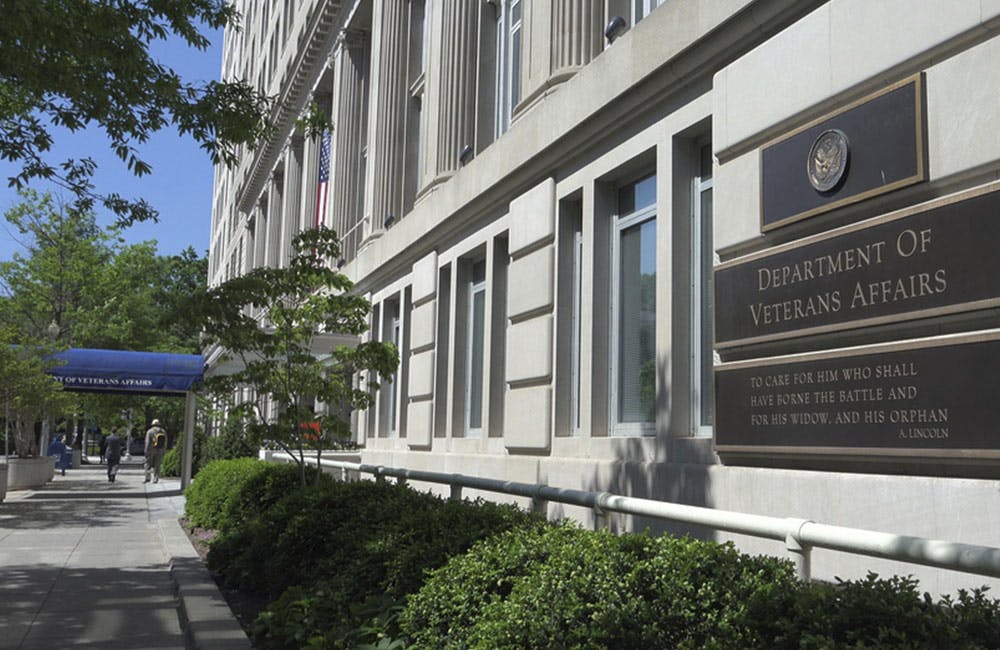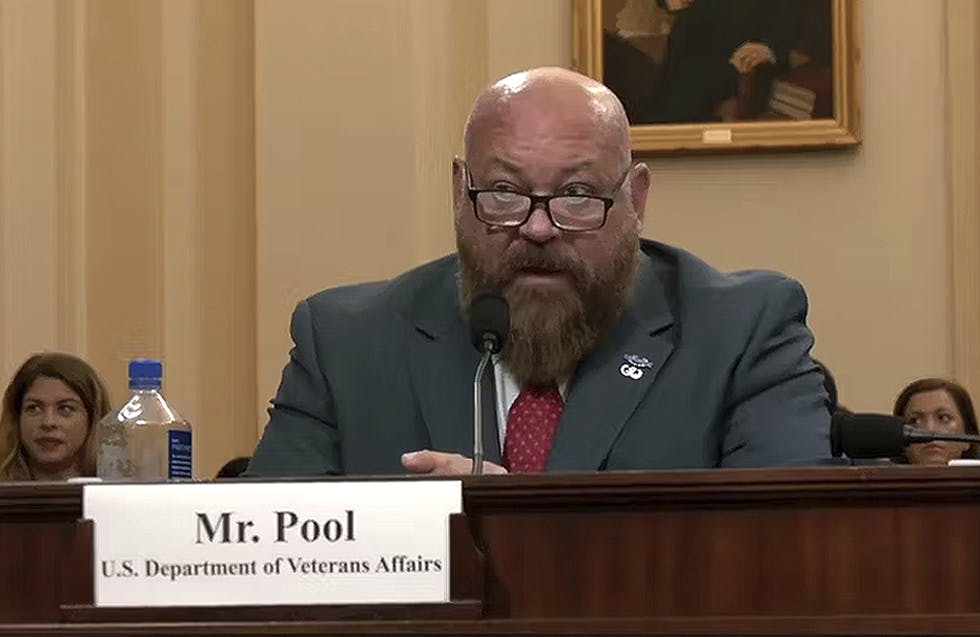VA, NARA Partnership Streamlines Benefits Claims Processing
Digitization of claims and records has led Veteran Affairs to more efficiently allocate benefits.

The Department of Veterans Affairs has been spearheading a collaborative modernization project with the National Archives and Records Administration (NARA) that is enabling the agency to more quickly and efficiently provide veterans benefits especially amid workflow interruptions during the pandemic.
The process of digitizing veteran records began in 2011 and has entailed ongoing expansion as well as increasingly sophisticated means of incorporating essential information within VA’s database.
“We actually started that process probably almost a decade ago with our own process of digitizing our claims files. We had a significant storage warehouse of service treatment records that are required for every claim decision that we make,” said Veterans Benefits Administration Assistant Deputy Secretary Ken Smith in an interview with GovernmentCIO Media & Research. “We digitized all of those. So, ultimately, we’ve built a full digital capability long before ever thinking about a pandemic to better serve veterans.”
This process has allowed VA claims adjudicators to not only more efficiently access essential information, but also has enabled the agency to quickly upload new information, further streamlining the claims process.
“One of the more recent things that we’ve done, just internally, is to use a centralized mail portal,” Smith said. “We have a contract where we scan all of our incoming mail in, and it’s now in the claims file within 24 hours, significantly cutting down on mail-in process time and improving accuracy because we’re not missing evidence when we make decisions. It really allows us to serve veterans a lot faster.”
Much of the benefits claims adjudication managed by VA relies on corroborating records from a veterans service, particularly to verify incidents where a veteran received an injury, was exposed to dangerous material or experienced service-related psychological trauma. As part of this overall modernization, VA has begun collaborating with NARA’s National Personnel Records Center (NPRC) to ensure essential information is quickly digitized and shared with adjudicators.
“We’ve offered [the centralized mail portal] to NPRC, and we are scanning all of their inbound records so that the publicly stated inventory of 500,000 of those requests are being scanned in. That will allow them not only to assign that workout and ensure that we’re not answering requests more than one time, but also keep track of what they’ve got and allow them to answer any other requests that they already have that are digitized,” Smith said.
Expediting records from NPRC has allowed VA to adjudicate benefits more quickly, especially since determining claims often requires input from non-VA sources. This process was impacted by the COVID-19 pandemic.
“Due to COVID pandemic, we started to accrue an inventory of backlogged NPRC requests that reached about 80,000 by September. Beginning in September, we started having really direct conversations with the National Archives to figure out how to resolve that 80,000. While most of our claims process is done internally by our adjudicators, we do have touch points with external stakeholders in our supply chain,” Smith said.
Widespread vaccination has allowed in-person operations to resume safely, allowing the VA and NARA to collaborate further on expediting the claims process. Records requests that could have taken weeks or even months to fully settle are now being completed within days. This covers compensation for conditions ranging from Agent Orange exposure to post-traumatic stress disorder. This kind of digitization is particularly effective in awarding benefits in the case of a complex, multi-record adjudication process.
“In order to prove Agent Orange exposure, we needed to see whether or not they served within the correct proximity to the Republic of Vietnam. And in order to do that, you might need the official military personnel record from the [National Personnel Records Center] to see what ship the veteran was on. And then from there, we have a list of deck logs we are able to search to see if the ship served inside that perimeter,” Smith said.
The ultimate outcome has been significant improvement in the delivery of VA services and overall satisfaction among veterans.
“To be able to quickly and accurately confirm what we need to know in order to proceed with the claim is very important to us,” Smith said. “The expansion of that digital capability allows us to serve more veterans more quickly. One of the underlying features of VA is we are trying to serve all veterans in a way that honors their service. And I think all veterans recognize that they want their claim to be satisfied or answered quickly, and they want all of their brothers and sisters’ claims to be answered quickly and accurately as well.”
This is a carousel with manually rotating slides. Use Next and Previous buttons to navigate or jump to a slide with the slide dots
-

NSF Wants Industry Driving Quantum Innovation
The agency is pushing for partnerships to enhance the research community as Congress weighs additional legislation.
3m read -

White House Science Chief: US-Driven AI Sets Global Standards
Michael Kratsios outlined how American AI technology on the global stage will help standardize the tech and counter China’s influence.
5m read -

Modernizing Critical Infrastructure in the Face of Global Threats
Officials are expanding the latest strategies in boosting defense infrastructure, including securing satellite communications, upgrading enterprise-wide technology, optimizing data management.
20m watch -

Trump AI Orders Call for Speed in Building Infrastructure
The directives call for expanding AI infrastructure, streamlining federal permitting and promoting AI exports.
4m read -

DOD Accelerates Software Modernization with Agile DevSecOps Push
The Pentagon's software implementation plan tackles cultural hurdles and integrates security early to deliver critical capabilities faster.
6m read -

White House Unveils AI Action Plan to Secure Global Dominance
The strategy outlines steps to accelerate private sector innovation, build critical infrastructure and advance U.S. leadership in AI policy and security.
3m read -

VA's Platform One Powers Rapid Innovation to Bolster Digital Services
VA's Platform One accelerates software development timelines from weeks to hours, ultimately enhancing digital services for veterans.
5m read -

Federal Leaders Receive Federal IT Efficiency Flywheel Awards from GovCIO Media & Research
Five federal IT leaders received Flywheel Awards for driving innovation and modernizing technology at the Federal IT Efficiency Summit.
5m read -

Doing More with Less is Muscle Memory for IRS, Former Deputy CIO Says
Darnita Trower discusses her experience, the legacy she’s left behind and how she pushed the IRS to modernize itself,
20m watch -

Opinion: Original Intelligence Is the Missing Piece for AI Transformation
Limitations of AI agents and development drive growing needs for workforce development and "original intelligence."
3m read -

VA CIO Targets Modern IT and Smarter Workforce Alignment
Agency leaders told lawmakers they are focused on trimming legacy systems and restructuring its workforce to streamline operations.
3m read -

Pentagon's $200M AI Contracts Signal Broader Effort to Transform Talent
The Army is leveraging Silicon Valley, reservist programs and new hiring strategies to integrate critical digital skills in its ranks.
5m read
















